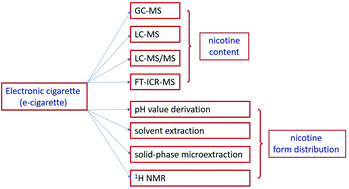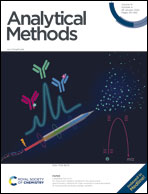Progress in quantification of nicotine content and form distribution in electronic cigarette liquids and aerosols
Abstract
Each electronic cigarette (e-cigarette) is a battery-powered system which converts electronic cigarette liquids (e-liquids) into the inhalable phase by heating the solution when it is in use. After four generations of development, e-cigarettes tend to be more customized and user-operable. The main components in the e-liquid and the aerosol are vegetable glycerin, propylene glycol, nicotine, organic acid and some flavor ingredients. Among them, nicotine is closely associated with the irritation and physiological satisfaction caused by tobacco products, and it is the core functional substance of e-cigarettes. For this reason, the quantification of nicotine content and nicotine form distribution mainly focuses on the components of the e-liquid and the released aerosol. Up to now, various technologies and methods have been applied in the analysis and research of nicotine content and nicotine form distribution in the e-liquid and its aerosol. GC-MS is often used as the most viable tool for the analysis of volatile organic compounds and can be widely applied in the measurement of nicotine related chemicals; there are a number of quantitation strategies using LC-MS, LC-MS/MS or 1H NMR for the analysis of e-cigarette samples. We also reviewed the four main methods for determining the distribution of nicotine forms, which are pH value derivation, solvent extraction, SPME and NMR methods. These research methods are of great significance to the upgrading and development of e-cigarette products.



 Please wait while we load your content...
Please wait while we load your content...